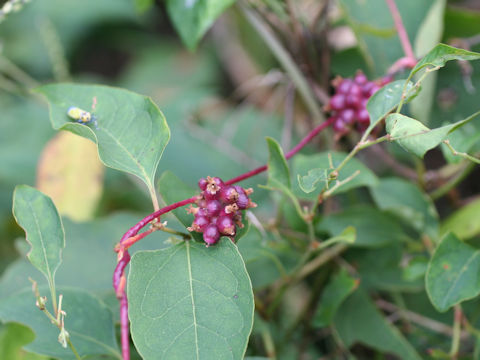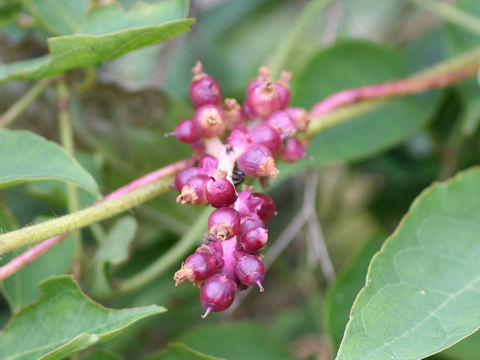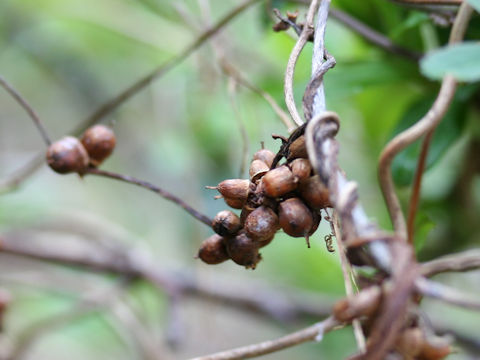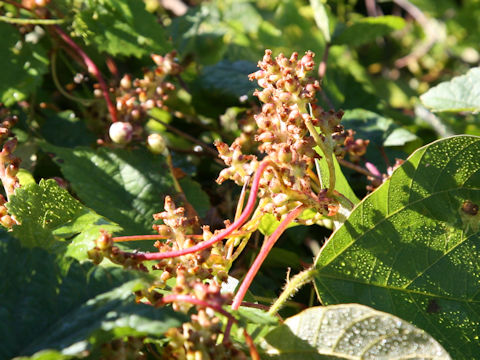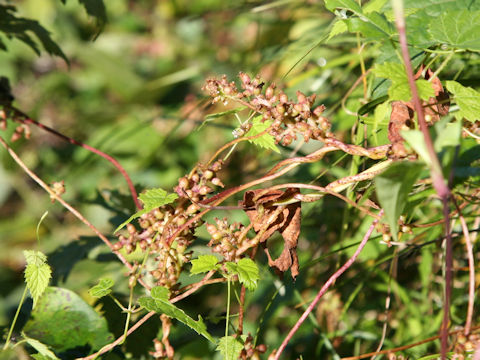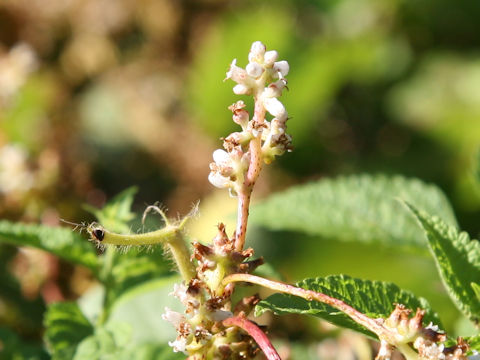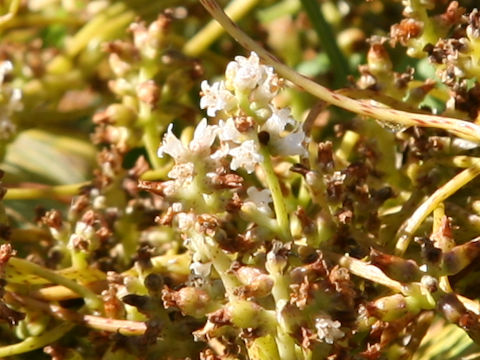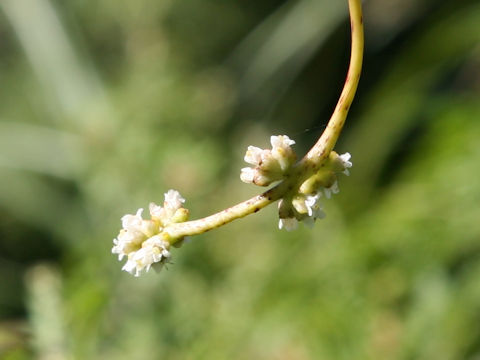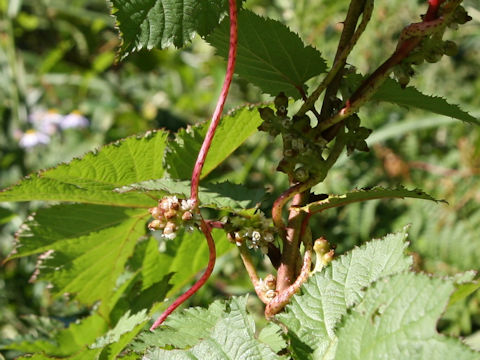
|
The Japanese dodder (Cuscuta japonica) belongs to Cuscutaceae (the Dodder family). It is an annual herb that is distributed not only in various parts of Japan, but also in the Korean Peninsula, China, Vietnam, and the Amur region. This herb grows in sunny mountains and is vine and parasitizes other plants. The leaves degenerate into scales, producing parasitic roots and absorbing nutrients. When it becomes parasitic, it disappears to the roots. From August to October, short spikes are borne and small white flowers come in bloom. The fruit is a capsule, and when it matures, the upper lid can be removed. It seems that it has been naturalized in Texas and Florida in the southern United States. It is called "金灯藤" (jin deng teng) in Chinese.
|

